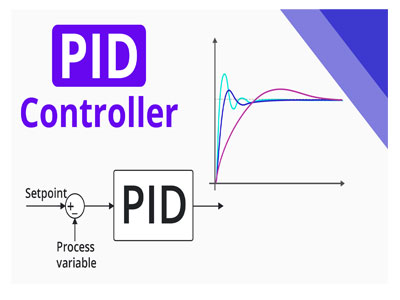How Do PID Controllers Handle Time Delays In A Process?
Key Takeaway
PID controllers handle time delays in a process by using specific tuning methods and algorithms to maintain stability and performance. One common method is the Smith Predictor, which predicts the process output and compensates for the delay, ensuring the PID controller can react promptly. Another approach is using the Ziegler-Nichols tuning method, which adjusts the PID parameters based on the process’s time delay and response.
These methods help the PID controller to maintain desired performance despite the delay. The goal is to minimize the impact of the delay on the process control, ensuring the system remains stable and efficient. Proper tuning of the PID parameters is crucial to handle time delays effectively.
Understanding Time Delays in Control Systems
Time delays, also known as dead time, occur when there is a lag between the input and output in a control system. This lag can be due to various factors, such as sensor response time, actuator delays, or transport delays in the process. Essentially, the system doesn’t react instantly to changes, creating a delay between the action taken by the controller and the observed effect on the process variable.
Time delays can pose significant challenges in control systems. They can cause instability, reduce system performance, and make it harder to achieve precise control. Understanding the sources and effects of these delays is the first step in effectively managing them.

Impact of Time Delays on PID Performance
Time delays can significantly impact the performance of PID controllers. When a delay is present, the controller’s corrective actions may arrive too late to effectively counteract the error, leading to oscillations, overshoot, or even instability. The proportional, integral, and derivative actions of the PID controller can all be adversely affected by time delays.
Proportional Action: The immediate response to an error is delayed, reducing its effectiveness.
Integral Action: Accumulated error over time may cause the controller to overcompensate.
Derivative Action: The prediction of future errors becomes less accurate, leading to incorrect damping.
These impacts can make the system less responsive and harder to control, emphasizing the need for strategies to manage time delays effectively.
Techniques for Managing Time Delays
Several techniques can be employed to manage time delays in PID control systems. One common approach is the use of the Smith Predictor. This technique involves creating a mathematical model of the process, including the delay, and using this model to predict future process outputs. By compensating for the delay, the Smith Predictor allows the PID controller to react more effectively.
Another technique is dead-time compensation, where the controller parameters are adjusted specifically to account for the delay. This can involve tuning the PID gains to reduce the impact of the delay on the system’s performance.
Filter Implementation: Adding a filter to the feedback loop can help smooth out the delayed response, making the system more stable.
Each of these techniques can help improve the performance of PID controllers in the presence of time delays, making it possible to maintain stability and achieve desired control objectives.
Practical Examples of Delay Compensation
Let’s consider a practical example involving a temperature control system in an industrial furnace. The system experiences a delay due to the time it takes for heat to distribute evenly throughout the furnace.
Smith Predictor Implementation: By modeling the furnace and incorporating the delay into the model, a Smith Predictor can be used to anticipate the effect of temperature changes and adjust the heating elements accordingly.
Dead-Time Compensation: Adjusting the PID gains specifically to account for the delay, such as reducing the integral gain to prevent overcompensation and tweaking the derivative gain to improve damping, can enhance control.
Filter Application: Adding a low-pass filter to the temperature feedback loop can smooth out the delayed response, making the control more stable and effective.
These practical applications demonstrate how various techniques can be used to manage time delays and maintain efficient control.
Advanced Strategies for Minimizing Delay Effects
For more advanced control systems, several strategies can be employed to minimize the effects of time delays. One such strategy is the use of adaptive control, where the PID parameters are continuously adjusted based on real-time process data. This allows the controller to adapt to changes in the process dynamics and delay characteristics.
Model Predictive Control (MPC) is another advanced technique that involves using a dynamic model of the process to predict future behavior and optimize control actions. MPC can handle multiple inputs and outputs, making it well-suited for complex processes with significant delays.
Feedforward Control: This strategy involves using a separate control path to anticipate and compensate for disturbances before they affect the process. By incorporating knowledge of the delay into the feedforward path, the controller can take preemptive actions to mitigate its impact.
These advanced strategies offer powerful tools for dealing with time delays in PID-controlled systems, ensuring better performance and stability.
Conclusion
Effectively managing time delays in PID control systems is essential for maintaining stability and achieving optimal performance. By understanding the nature of time delays and their impact on PID performance, you can employ various techniques and strategies to mitigate their effects.
From basic approaches like the Smith Predictor and dead-time compensation to advanced strategies like adaptive control and Model Predictive Control, there are numerous ways to address time delays. Practical examples, such as temperature control in industrial furnaces, highlight the application of these techniques in real-world scenarios.
By implementing these methods, you can ensure that your control systems remain responsive, stable, and efficient, even in the presence of time delays. This knowledge is crucial for any engineer working with PID controllers in industrial settings, helping you achieve precise and reliable process control.

